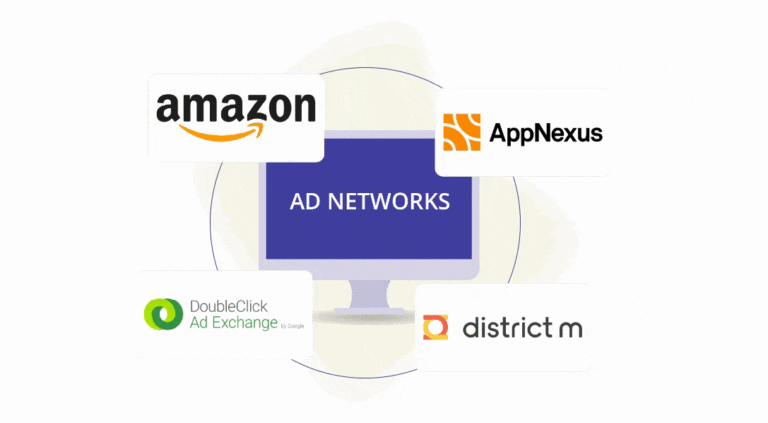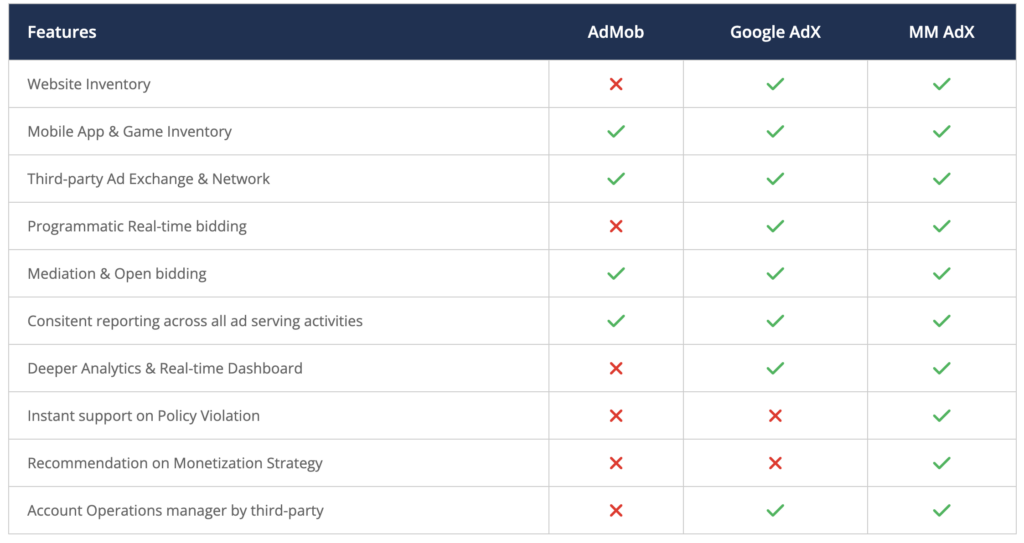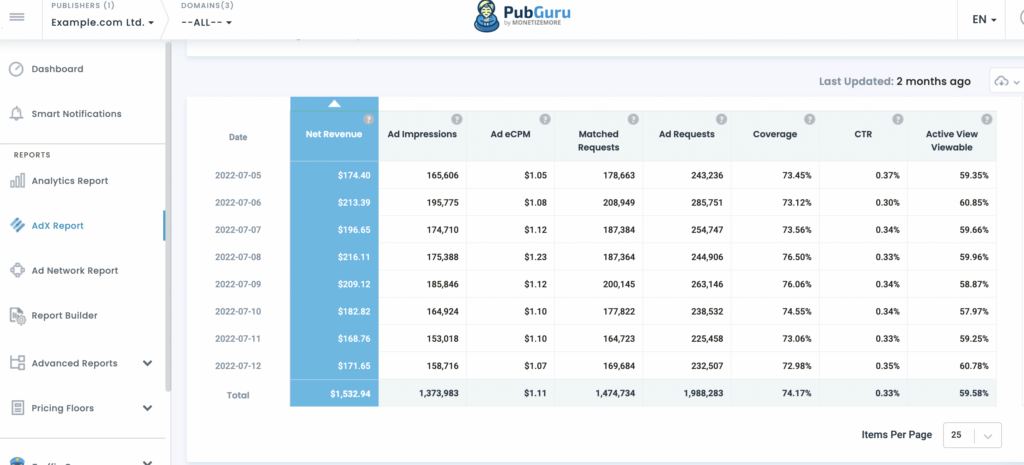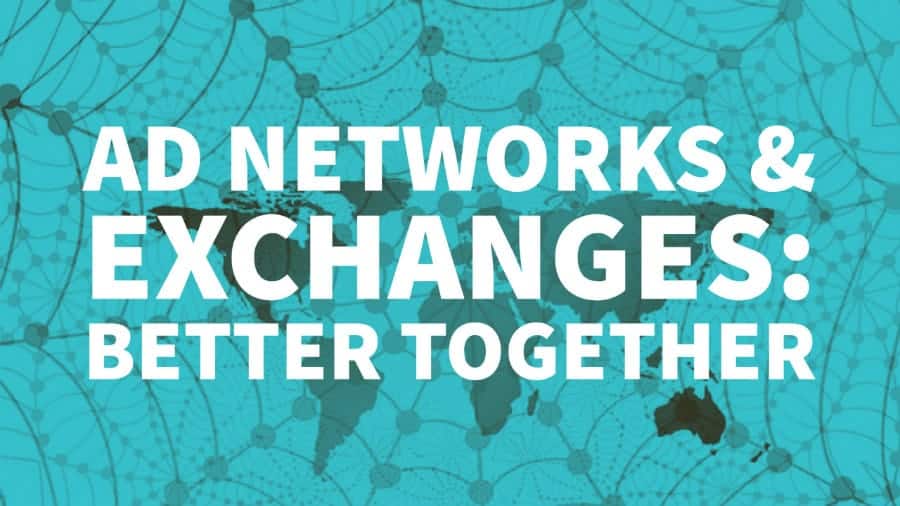In AdTech, the synergy between ad networks and ad exchanges is often underestimated. These two pivotal components work hand in hand, enabling publishers and advertisers to optimize their revenue streams and reach wider audiences. In this comprehensive guide, we delve into the intricacies of ad networks and ad exchanges, shedding light on how they can work together to maximize your online advertising revenue.
Ad networks have been a cornerstone of programmatic advertising for many years. These networks serve as intermediaries between publishers (website owners) and advertisers (those seeking to display ads). The primary purpose of ad networks is to connect publishers with a vast pool of potential advertisers, facilitating the monetization of their digital real estate.
The Function of Ad Networks
Ad networks operate on a simple premise: they aggregate ad inventory from multiple publishers and make it available to advertisers. This aggregation allows advertisers to access a broader range of websites and target specific demographics, ultimately increasing their ad reach and effectiveness.
Let’s delve deeper into the Functions of Ad Networks
- Aggregating Ad Inventory: Ad networks serve as a central hub where publishers can aggregate their available ad space or inventory. Publishers, in this context, refer to website owners or app developers looking to monetize their digital assets through advertising.
- Connecting Publishers and Advertisers: One of the primary roles of ad networks is to bridge the gap between publishers and advertisers. They act as intermediaries, providing a platform for publishers to showcase their available ad slots and for advertisers to discover these opportunities.
- Ad Campaign Management: Ad networks often offer tools and interfaces that facilitate the management of ad campaigns. This includes options for advertisers to choose the specific websites or apps where they want their ads to appear, set budgets, and define targeting parameters such as audience demographics, location, and keywords.
- Ad Scheduling: Ad networks allow advertisers to schedule when their ads will be displayed. This scheduling can be based on factors like time of day, day of the week, or specific events or promotions.
- Performance Tracking and Analytics: Ad networks provide comprehensive reporting and analytics tools to both publishers and advertisers. Publishers can monitor the performance of ads on their websites, while advertisers can track the effectiveness of their campaigns in real-time.
- Payment Processing: Ad networks often handle the financial aspects of advertising transactions. They ensure that publishers are compensated for displaying ads on their platforms and collect payments from advertisers for their ad placements.
- Ad Delivery and Optimization: Ad networks utilize advanced algorithms to optimize ad delivery. This optimization can involve factors such as ad placement, ad format, and targeting to ensure that ads are displayed to the right audience at the right time.
- Ad Format Support: Ad networks support various ad formats, including display ads, video ads, native ads, and more. This versatility allows publishers and advertisers to choose the ad types that best suit their objectives and audience.
- Ad Quality Control: Ad networks often have mechanisms in place to maintain the quality of ads displayed on publisher websites. They may review and approve ads to ensure they comply with industry standards and do not compromise the user experience.
- Revenue Maximization: For publishers, ad networks are instrumental in maximizing revenue by filling their available ad slots efficiently. Ad networks connect publishers with a wide range of advertisers, creating competition for ad space and potentially driving up ad rates.
- Cross-Platform Reach: Many ad networks extend their reach across various digital platforms, including websites, mobile apps, social media, and more. This cross-platform compatibility allows advertisers to reach their target audience wherever they are online.
- Global Reach: Ad networks often have a global presence, enabling advertisers to access audiences on a worldwide scale. This is particularly beneficial for businesses looking to expand their reach beyond their local market.
Related Read:Top Ad Servers
Benefits of Ad Networks

- Increased Monetization: Ad networks enable publishers to fill their ad inventory efficiently, maximizing revenue potential. They implement dynamic pricing models, adjusting ad rates based on real-time demand and audience engagement. This pricing flexibility maximizes revenue by capturing the highest value for ad impressions.
- Streamlined Operations: Publishers benefit from streamlined operations as ad networks manage the technical aspects of ad delivery, leaving publishers to focus on content creation. Ad networks employ technical experts who handle ad placement, ad formats, and troubleshooting. This expertise ensures that ads are displayed correctly and that any technical issues are resolved promptly, freeing up publishers from these concerns.
- Diverse Advertisers: Ad networks bring together a diverse range of advertisers, creating competition for ad space and driving up ad rates. The networks offer a wide range of ad formats, from display ads to video ads and native ads. This variety attracts advertisers with varying campaign goals, ensuring that publishers can accommodate different advertising needs and preferences.
- Access to Ad Targeting Tools: Ad networks provide publishers with access to advanced ad targeting tools. These tools allow publishers to deliver ads to specific audience segments based on factors such as demographics, location, interests, and browsing behavior. This precision targeting not only enhances the user experience but also increases the likelihood of ad engagement and conversions.
- Increased RPMs Through Competition: Ad networks create a competitive environment for advertisers to bid on ad space. This competition can drive up ad rates, leading to higher RPMs for publishers. When multiple advertisers vie for the same ad slots, it often results in increased bid amounts, ultimately benefiting publishers by increasing their RPMs and revenue per impression.
While ad networks focus on connecting publishers and advertisers, ad exchanges take a slightly different approach. Ad exchanges are digital marketplaces where ad inventory is bought and sold through real-time bidding (RTB) auctions. These auctions happen in the blink of an eye, ensuring that ad space is allocated to the highest bidder.
What is an Ad Exchange?
Ad exchanges are digital marketplaces where publishers and advertisers come together to buy and sell ad inventory in real-time. These platforms enable automated, algorithm-driven transactions where ad spaces on websites or mobile apps are auctioned to the highest bidder.
The Mechanism Behind Ad Exchanges
The process begins when a user visits a webpage. If this webpage has ad spaces available for auction, the ad exchange steps in.
- Impression Data Gathering: The user’s data, such as browsing history, demographics, and other relevant details, are instantly sent to the ad exchange.
- Auction Announcement: The ad exchange announces the availability of the ad space to potential advertisers.
- Bidding: Advertisers who are interested in displaying their ads to that particular user place their bids. The highest bidder gets to display their ad.
- Ad Delivery: The winning ad is immediately delivered to the webpage and displayed to the user.
This entire process, from the user visiting the webpage to the display of the ad, takes milliseconds.

Publishers: Publishers are the entities that offer ad spaces on their websites or mobile apps. They set a minimum price, also known as the floor price, for their ad inventory.
Advertisers: Advertisers are businesses or individuals who wish to promote their products or services. They use ad exchanges to find the most relevant spaces to showcase their ads.
Demand Side Platforms (DSPs): DSPs act on behalf of advertisers. They automate the process of purchasing ad inventories on ad exchanges.
Supply Side Platforms (SSPs): SSPs represent publishers, helping them to manage and sell their ad inventories most efficiently.
Benefits of Ad Exchanges:

- Efficient Allocation:Ad exchanges employ real-time bidding (RTB) to ensure that ad inventory is allocated to the highest bidder in real-time. This dynamic allocation optimizes revenue for publishers by maximizing the value of each ad impression. Ad space is sold to the advertiser willing to pay the most at that specific moment, increasing revenue potential.
- Data-Driven Decisions:Ad exchanges leverage user data to serve highly targeted ads, enhancing user engagement and increasing the likelihood of conversions. RTB auctions consider a user’s browsing history, demographics, interests, and behavior to deliver ads that align with their preferences, resulting in more relevant and engaging ad experiences.
- Transparent Reporting:Ad exchanges provide transparent reporting and analytics tools, allowing publishers to gain valuable insights into the performance of their ad inventory. These reports offer a clear view of key metrics, enabling publishers to fine-tune their ad strategies for better results.
- Access to Global Markets:Ad exchanges provide publishers with access to a global pool of advertisers and demand sources. This diverse advertiser base includes both local businesses and multinational corporations seeking to expand their reach. This global reach enables publishers to monetize their ad inventory across diverse geographic regions, increasing revenue potential and expanding their market presence.
- Cross-Channel Advertising:Ad exchanges support various advertising channels, including display, video, mobile, and even emerging channels like connected TV (CTV). This versatility allows publishers to tap into different advertising formats, catering to a wider range of advertiser preferences and increasing revenue opportunities across multiple channels.
Challenges of Ad Exchanges
Data Privacy Concerns: The use of user data for targeted advertising can raise concerns about privacy and data misuse.
Ad Fraud: The digital nature of ad exchanges can sometimes lead to issues like ad fraud, where invalid traffic is generated to boost ad impressions artificially.
The Future of Ad Exchanges
With the rapid advances in technology and increasing demand for personalized user experiences, ad exchanges will continue to evolve. There is a clear shift towards more transparent, efficient, and user-centric advertising platforms. Integration with technologies like AI and Machine Learning will further optimize the ad buying process, benefiting both publishers and advertisers.
In conclusion, ad exchanges are revolutionizing the digital advertising landscape. By understanding their intricacies, businesses can harness their potential, ensuring optimal ad placements, and achieving the best possible return on advertising investments.
The Symbiotic Relationship between Ad Networks & Ad Exchanges
To truly maximize ad revenue, it’s essential to recognize the symbiotic relationship between ad networks and ad exchanges. When used in conjunction, these two elements create a powerhouse of monetization potential.
Synergy Between Ad Networks and Ad Exchanges: Boosting Revenue and Targeting
Incorporating both ad networks and ad exchanges can significantly elevate revenue potential, create a more reliable income stream, and refine your targeting efforts for enhanced ad campaign performance. This synergy ensures a robust and optimized advertising ecosystem that benefits both publishers and advertisers alike. Here’s how:
- Ad Network Integration for Premium Placement:Publishers can seamlessly integrate ad network placements within their ad exchanges, offering advertisers prime real estate on their websites or apps. This integration combines the strengths of both systems, ensuring that advertisers can access premium ad space while benefiting from the ad exchange’s dynamic real-time bidding capabilities. This strategy optimizes revenue by allowing publishers to monetize their most valuable ad slots efficiently.
- Diversified Revenue Streams for Consistent Income:The harmonious marriage of ad networks and ad exchanges empowers publishers to diversify their revenue streams effectively. By using both systems in tandem, publishers reduce their dependency on a single source of income. This diversification ensures a consistent and stable revenue flow, even in the face of market fluctuations or changes in advertiser demand. Publishers can rely on multiple avenues for revenue, enhancing financial stability.
- Enhanced Targeting for Effective Ad Campaigns:Ad exchanges provide publishers with invaluable data insights. This data can be harnessed to refine and optimize ad network targeting strategies. By leveraging the user data gathered through ad exchanges, publishers can enhance the precision of their ad network placements. This synergy results in more effective ad campaigns, as ads are delivered to audiences with a higher likelihood of engagement and conversion.
Conclusion
Understanding the intricate relationship between ad networks and ad exchanges is paramount. These two components, when utilized harmoniously, offer publishers the opportunity to maximize revenue and deliver targeted, engaging ads to their audience.
Unlock the full potential of your digital advertising strategy by harnessing the power of ad networks and ad exchanges. By doing so, you’ll not only enhance your online presence but also stay ahead of the competition in the dynamic world of digital advertising.
Explore the synergy of ad networks and ad exchanges today and take your online advertising revenue to new heights by getting started here!
With over seven years at the forefront of programmatic advertising, Aleesha is a renowned Ad-Tech expert, blending innovative strategies with cutting-edge technology. Her insights have reshaped programmatic advertising, leading to groundbreaking campaigns and 10X ROI increases for publishers and global brands. She believes in setting new standards in dynamic ad targeting and optimization.





